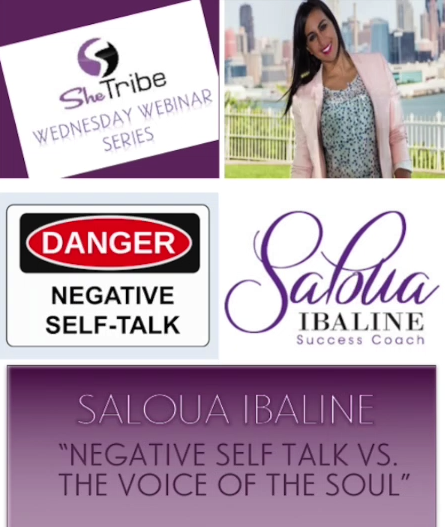
As a career warrior, knowing what you want out of your career is essential to your professional success. We have all experienced that point in our careers where we just know it is time to move on. Perhaps we no longer enjoy what we are doing, or advancement opportunities come to a halt or the financial rewards no longer align with the expectations. Whatever the reason, you know it is time to move on.
Planning your career transition in advance gives you the opportunity to fully plan your move with the lease amount of disruption. Plus, it provides you the time to understand and analyze a full range of options that you can consider and prepare for ahead of time. Whether you intend to make a career move now or in the future, having a plan in advance will support you with making the smoothest transition.
But, I understand that knowing where to begin can be difficult so I have put together these five steps to help you.
Step One: Do Your Due Diligence and Prepare
Take the time to think. Yes, I said think. Now that you have decided you want something more, take the time to identify what that looks like for you. To build any plan, you not only need to know where you want to go, but where you are currently. Review your career documents – do you have a contract? A non-compete? ; Evaluate your finances – Are you prepared for this change? Contemplate your new career, what would you like to do? Would you relocate if the opportunity is right? Do you need additional training or education? What kind of company do you want to work for? What does that culture look like? What role would you like to have? What are the important characteristics – Great pay and benefits?, a relaxed environment? Upward mobility?
Take the time to identify what exactly you want and what you need to do to get there. Write it down and start to prepare yourself to do whatever you need to do to get there.
Remember… and it’s a Tweet This!
Step Two: Build Your Network
Your professional network is one of the most important assets you can have in your career but it takes time to develop but the payoff is big. Connecting with others who share common interest, are in your industry or hold positions that you aspire can be a great resource when you are looking to make a move. You can build and strengthen your network by joining a professional or industry-related association, alumni group, and chamber of commerce committee. Identify and target those in your industry who you would like to meet and schedule informal meetings with them as soon as possible.
Social media is also a great resource. Sites such as LinkedIn, Twitter, Facebook and Meetup have become great places to engage and connect with other users in your industry and to build relationships with new people. In addition, these are great platforms to position you as a thought leader through comments to discussion and posting articles on industry topics. This is a vehicle to strut your stuff!
To get started, find interest groups related to your industry and start commenting on the discussion boards. Take your opinions and knowledge to the masses. As you approach companies, they will be looking at your social media accounts so use this space and position yourself as a professional.
But it is critical to use your live network. Most careers are advance via a professional network. People you know who are able to bring you opportunities and vouch for you within their organizations.
The best way to build your network is to be “real”. Engage with your network, serve your network on a regular basis, keep your network informed and lastly, make it a mission to connect people in your network with others so your network grows.
Step Three: Build Your Personal Brand
Before you begin your job search, make sure you have clearly defined your personal brand. How are you setting yourself apart from the competition and how does that difference enhance a potential employers position. Now a days it is more than demonstrating you can do the job, it is about adding value over an above the tasks you can perform. Your personal brand is the good will that you bring with you. – How are you viewed in the industry? Who are you connected to? What is your visibility? How do people describe you?
Your personal brand can be developed in a range of ways. First of all, make sure that that you Google yourself. What story does your social media tell? Is your employer going to see pictures of you doing a keg stand and getting out of control on Facebook? Or are they going to see a well-positioned potential executive? Second, review all of your career documents and make sure they are up to date. This includes your resume, cover letters, LinkedIn profiles and Industry profiles.
An investment in a professional writer to help you position yourself could be something to consider at this point in your career. There a many resources and organizations available on line to help you write your professional documents.
Rule of thumb – your resume, cover letter and profile should be forward thinking and result/outcome oriented. If you simply list the bullets in your job description, it may be time to get some help.
Step Four: Identify Target Company and Positions
You have already taking the time to think about your next career move and identify the position you want, the type of company you prefer and the future you want. Plus, you have built a strong network and have started to build your professional brand. Now it is time for you to start approaching potential employers.
Whether you are working on your own, or with a recruiter, be sure to do you research on which companies you are interested in. Reach out to your network to identify who may know key players within your targeted companies and ask for an introduction. Research the companies websites and open positions and if there is one that you want, apply for the position. If you are in mid management, try applying to 5 – 10 companies a day. If you are in executive management, your position will not be listed on job search sites, this is where recruiters and your network will come in handy but the same logic applies. Reach out to 5 -10 of your contacts to see how they can help you.
By using these first four steps, you are sure to be noticed by other companies, but be prepared for when the call comes for a phone interview and a live interview. – Search our site for tips on how to master your interviews.
Step Five: Stay Positive and Optimistic
Change is difficult even when you are ready to move on. You have most likely formed relationships and friendships with your co workers, Perhaps feel an obligation around loyalty to you employer and maybe finding another job is taking some time. All of these things can take an emotional toll on your attitude.
It is important to stay motivated and positive. One of the best things you can do for yourself is to stay in the right frame of mind. Believe in yourself, know that opportunity will come knocking and believe that you deserve this change.
This will translate into a positive energy that will be recognized by everyone you come into contact with. It will keep you energized through the actual transition and will yield you tremendous results.
But remember this Golden Rule “Don’t Burn Bridges” Refrain from speaking negatively about your previous or current employer during the job search, including networking and interviewing.
No matter how bad it was for you in your previous position, you can find the positive experience that has helped you grow.
So Remember:
- Do your Due Diligence and Prepare
- Build a Strong Network
- Build your Personal Brand
- Identify Your Target Companies and Positions
- Stay Positive and Optimistic
Following these five steps will help you transition to your next career!
Tell me about your transition experience in the comments below and the steps you have tried that were successful.






